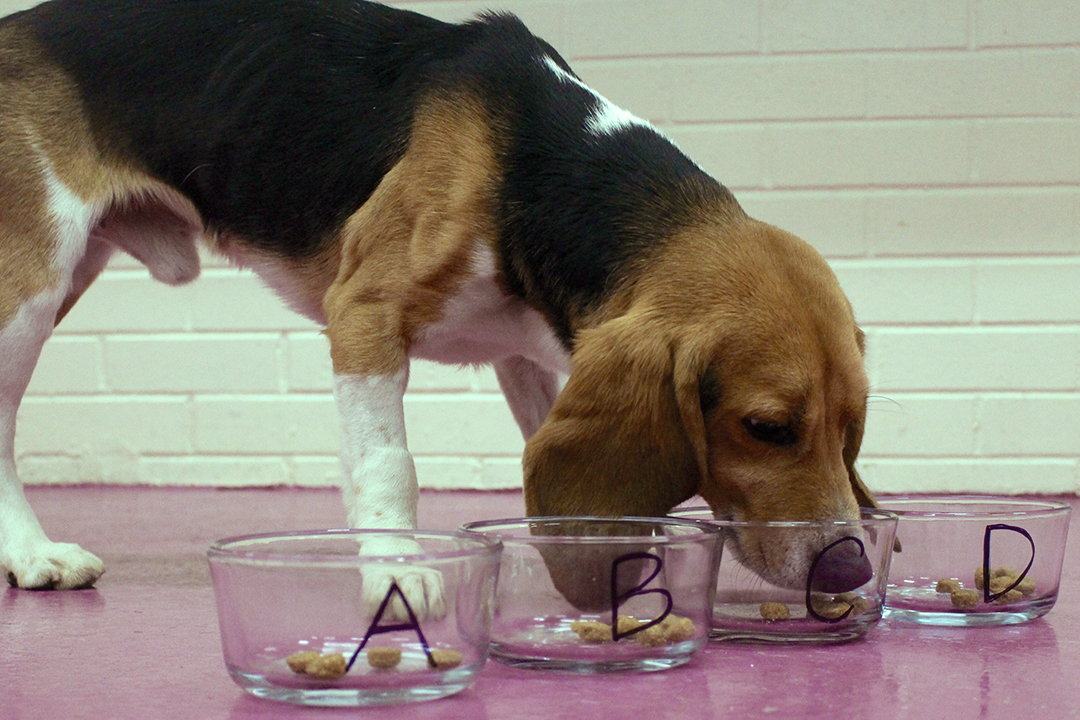
Faba beans potential pet food ingredient?
Do you ever survey the vast options of pet foods and find yourself wondering which one your pet will enjoy?
By Tressa MorrisYou’re not alone. Many pet owners ask these types of questions as they scan countless shelves full of feed options for their companion animals in local pet stores.
One possible new ingredient is faba beans – a member of the legume family and one of several pulse crops grown in Canada. A team led by Dr. Matt Loewen, with Dr. Lynn Weber as co-investigator, are professors at the Western College of Veterinary Medicine (WCVM), and are investigating whether faba beans could potentially join the pet food industry.
The University of Saskatchewan (USask) team is adding to research that could consequently lead to the inclusion of faba beans in pet food production. Their work could also help the market value for faba beans and have a positive impact for pulse crop producers in Canada.
“The farmers want to grow faba beans,” says Weber.
Faba beans are grown worldwide and are a rich source of protein. But because of their low value in current markets, a field full of faba beans is an unlikely sight in Saskatchewan and across the Prairies. In Canada, human consumption of faba beans as well as their use in livestock feed is quite limited.
Although faba beans offer a good protein source, they contain high levels of tannins (naturally occurring compounds) that give them a bitter taste — one of the reasons the market is lower in Canada.
“This leads to the question of pets … is palatability an issue in pets, similar to [what] it would be in humans?” says Weber.
If market conditions improve, farmers on the Prairies could have an advantage in growing faba beans since the plants thrive in high moisture areas. There are some areas in northern Saskatchewan and in other Prairie provinces where land is too wet to grow grain or oilseed crops. Producing faba beans could help to convert that land to a higher economic output.
Another advantage of faba beans is their higher resistance to mould and mildew. Once a crop has been harvested, farmers can store faba beans in grain bins for months or even years until market prices increase. With other crops, long-term storage can pose costly problems for farmers.
“Peas are more susceptible to mould and mildew than faba beans,” says Weber.
Another plus for faba beans is that “they seem to be a bit higher in protein,” adds Weber. They could possibly provide the pet food industry with access to a new, cheaper protein source that isn’t meat-based, potentially adding more options to the grain-free diet trend within the pet food industry.
“If you want a slowly digestible starch source — plus some plant protein — this would reduce the cost of the feed, which would be attractive to pet food companies,” says Weber.
The USask researchers will look at different varieties of faba beans, and as part of their work, they will ferment each variety and determine what types are the most palatable for dogs.
“[The pet food market is] not going anywhere, people are not getting rid of their pets — and so if you want to go after a solid and very large market, that’s the place to go,” says Weber.
Ideally this research can lead to a new economic outlook for pulse producers all over Canada, while allowing pet owners to be confident that their companion animals are enjoying their food.
The Government of Saskatchewan’s Agriculture Development Fund, Saskatchewan Pulse Growers and the Western Grains Research Foundation have provided funding for this research project.
Tressa Morris of Regina, Sask., is a fourth-year student in the College of Agriculture and Bioresources at the University of Saskatchewan. Her story is part of a series of articles written by WCVM summer research students.
